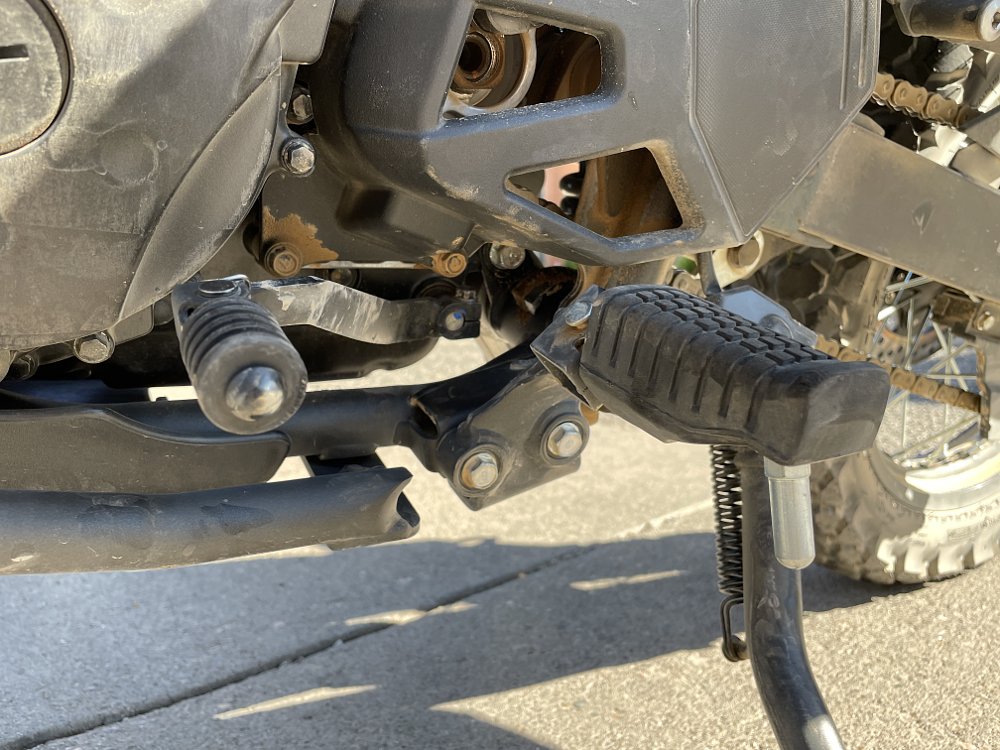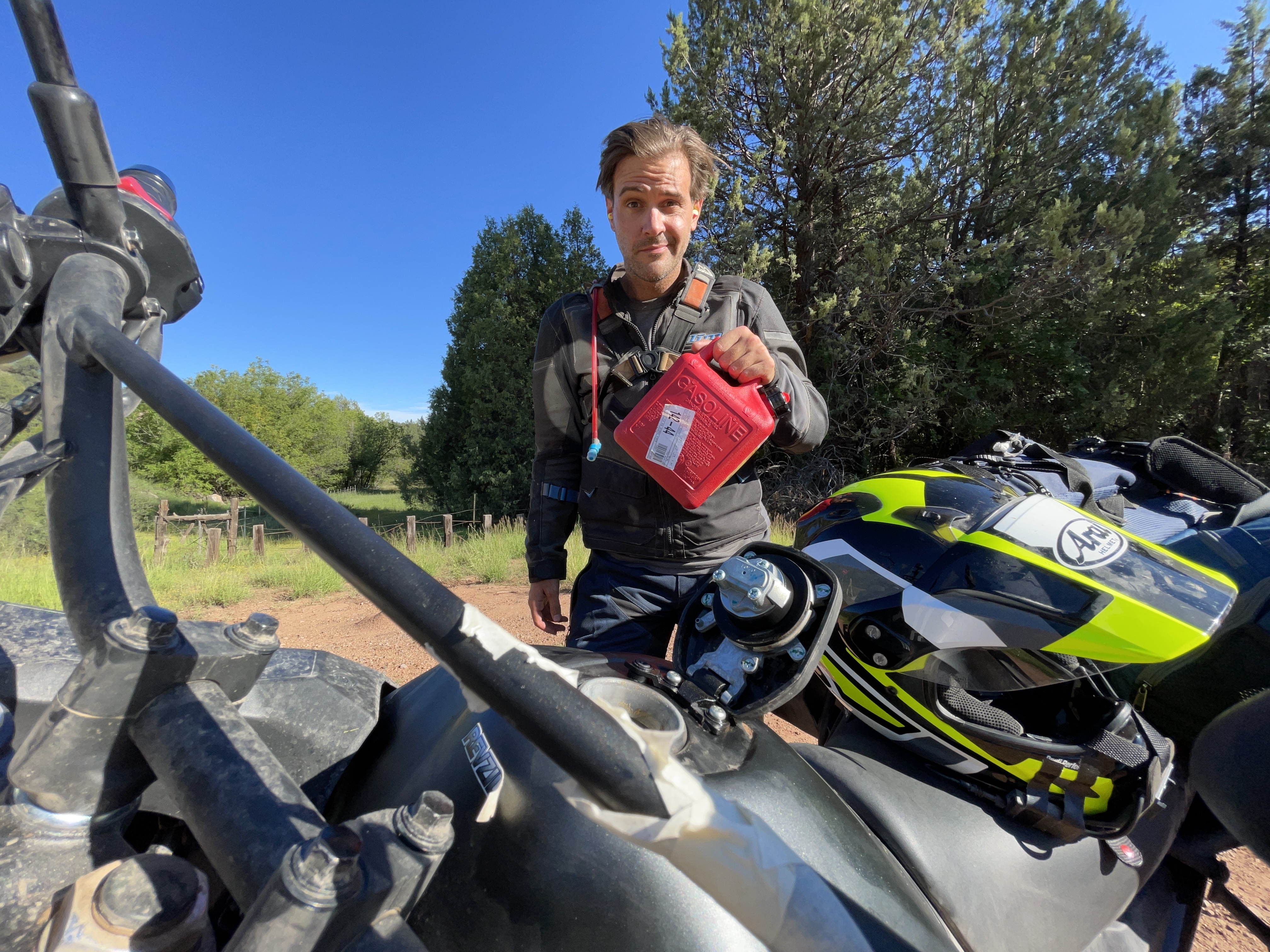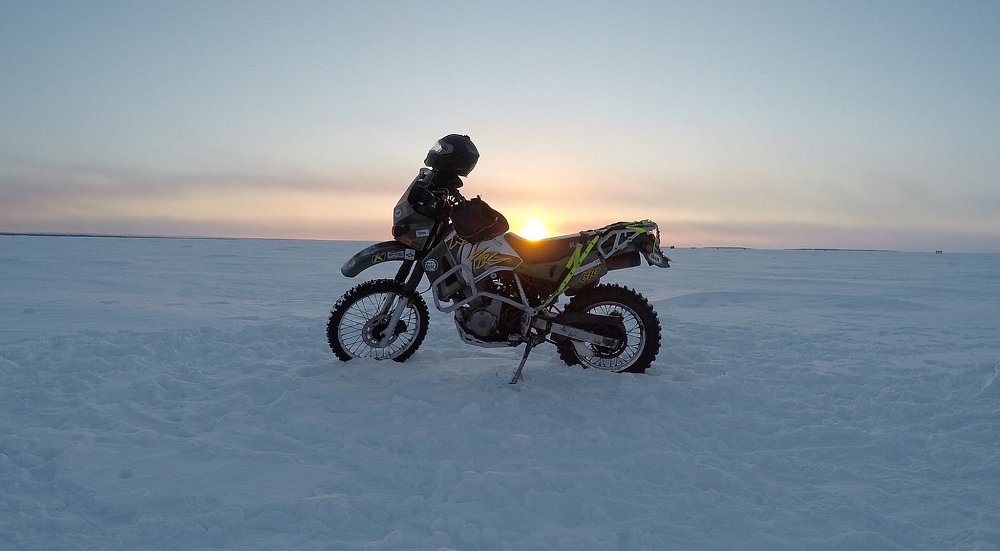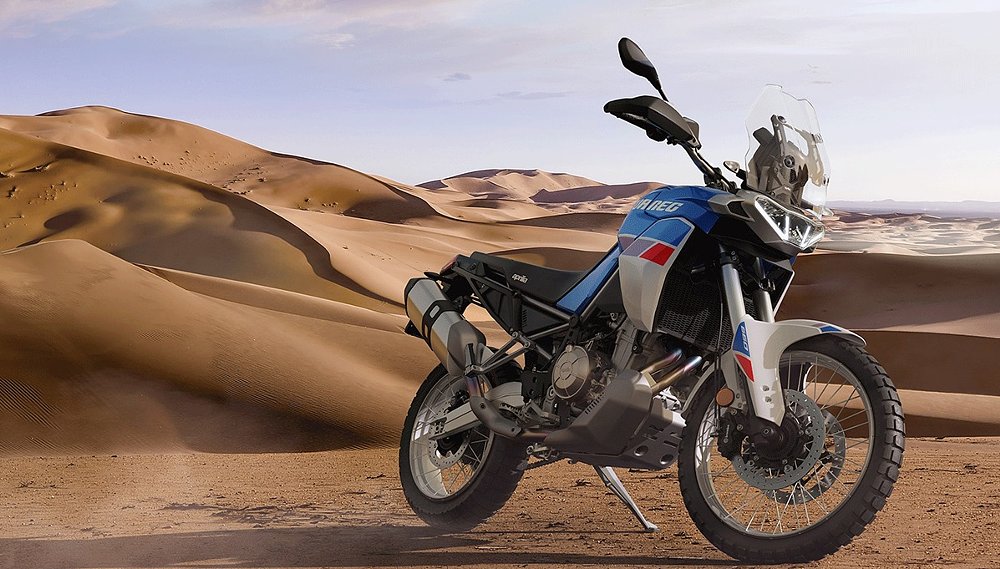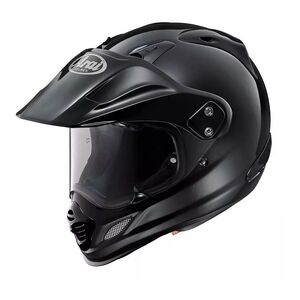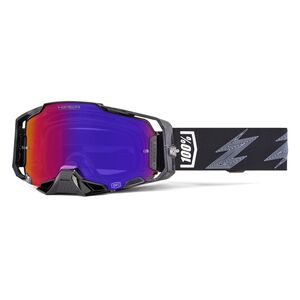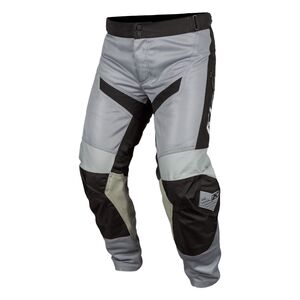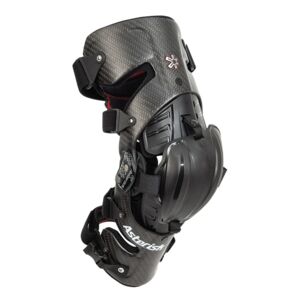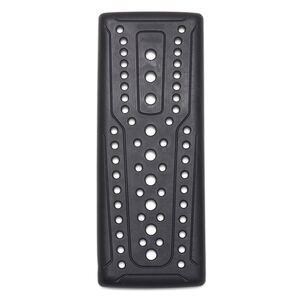A lot of folks seem to be saying that this is just a KLR650 updated with fuel injection.
While it is true that the bike is now fuel-injected, Kawasaki also made a lot of small, calculated changes that, when added up, equate to a very different bike from the one dropped from their lineup in 2018.
Kawasaki had a tough job. The KLR650 had been around, relatively unchanged, since 1984. Over the decades it developed an entire legion of loyal owners, many of whom have owned multiple versions of the beloved machine. My first ride on a motorcycle was on the back of my Uncle Bob’s 1984 KLR600.
Engineers had to walk a fine line of tackling updates to address criticism of the old model while staying true to the legacy of their own creation. At the end of the day, some things changed while others stayed the same. Kawasaki created a bike that will still be familiar to KLR650 stalwarts, while simultaneously differentiating itself from the models which came before.
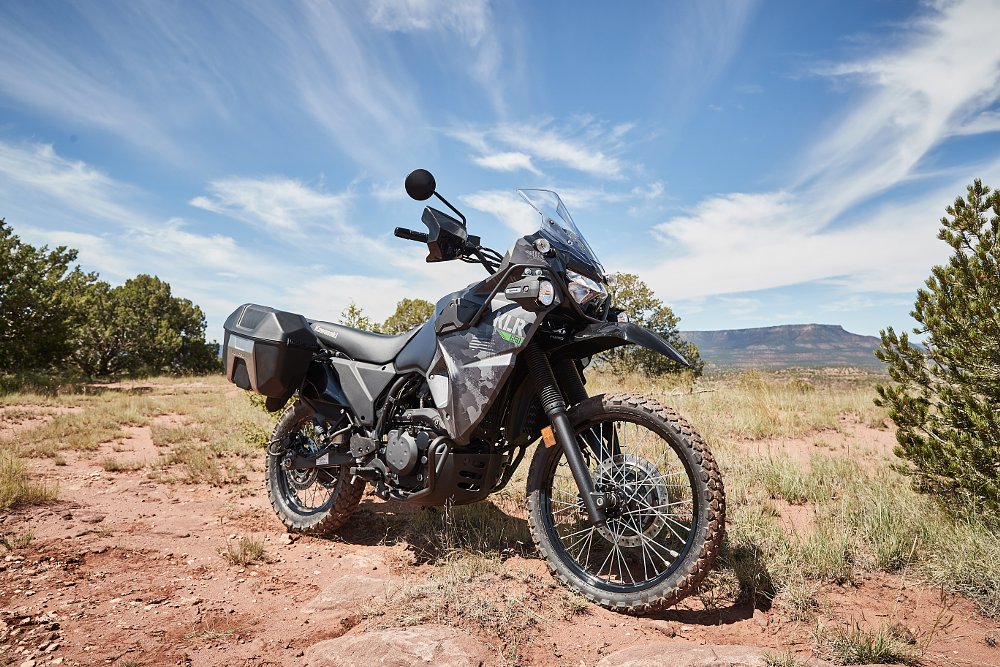
What’s new
The addition of a 10-hole fine atomizing fuel injector also means a new throttle body, ECI, and fuel pump for the KLR. A new fuel pump means a revised fuel tank. Kawasaki informed us that while the previous generation KLR could “run out of gas” with up to half a gallon of fuel remaining, the new 6.1-gallon tank can now fully utilize its entire payload, aside from one tenth of a gallon.
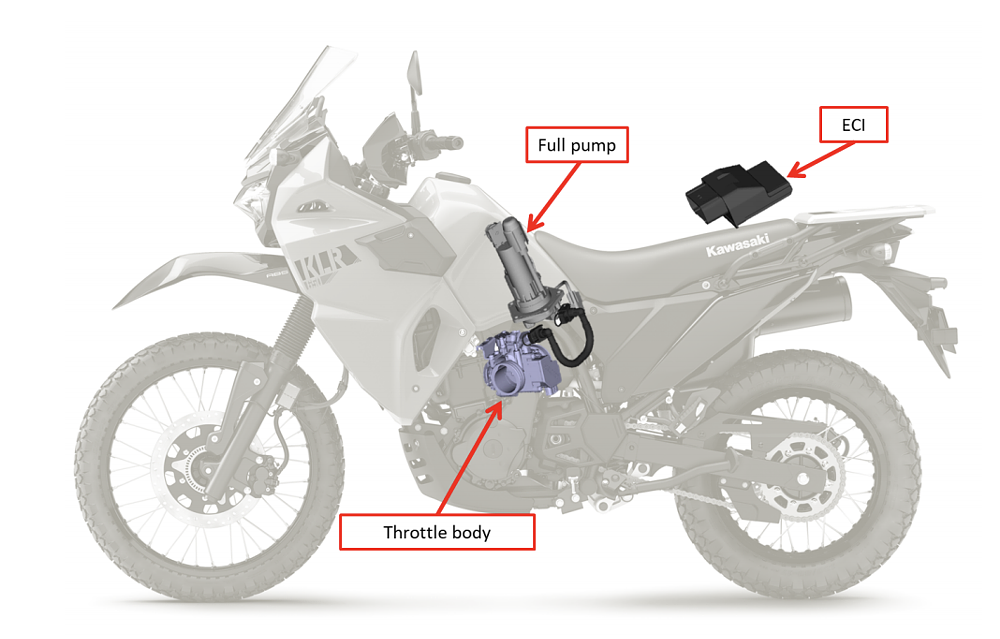
An O2 sensor provides feedback to the closed-loop fuel-injection system. Combined with a honeycomb catalyzer, that allows the new KLR650 to produce cleaner emissions and meet environmental requirements. Kawasaki also claims increased fuel efficiency.
The engine receives new intake and exhaust camshaft profiles, along with a reduced exhaust pipe diameter (35 mm, down from 42.7 mm), which are aimed at improving midrange power. It also gets a stronger cam chain guide with a revised shape that is designed to improve reliability.
This is not to be confused with the notorious KLR650 “Doohicky,” which is internet speak for the balancer chain adjuster lever. When asked about that particular piece, representatives from Kawasaki said that there were no changes from the previous redesign. They added that in spite of what information might exist on the internet, there were insufficient warranty claims to warrant improvements.
The clutch release bearing has been updated from ball bearings to needle bearings and the transmission gets revised third gear dogs and shift fork along with shaved finishing on fourth and fifth gears. With these changes, Kawasaki claims increased reliability from the transmission.
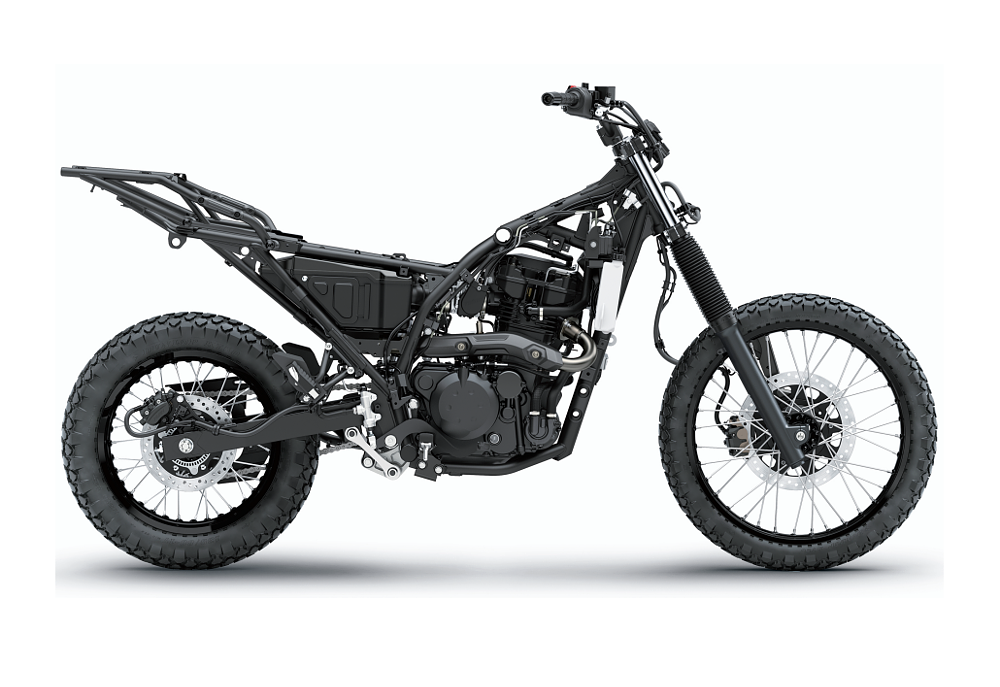
The KLR650 gets an all-new chassis for improved stability on the street. Whereas the previous generation KLR featured a bolt-on subframe, the new frame is now a one-piece design, which improves rigidity.
Rake has been increased to 30 degrees and trail to 4.7 inches (previously 28 degrees and 4.4 inches) and a new swingarm is 30 mm (1.2 inches) longer and features a 17 mm diameter swingarm pivot shaft (previously 15 mm). In addition, the axle diameter was increased to 20 mm at the rear wheel and 17 mm in the front (previously 17 mm and 15 mm respectively). According to Kawasaki, all of this contributes to the improved stability and reliability of the new model.
In an effort to improve the bike’s overall comfort, the handlebar and footpegs are now rubber-mounted. Rubber dampers were also added under the seat. The seat itself was redesigned with a new shape, cover material and urethane to create a thicker, firmer, and ultimately more comfortable saddle. It also gets a two-position windscreen that’s 50 mm (two inches) taller than the previous version. The handlebar is wider and the footpegs are set about 10 mm further out from the bike.
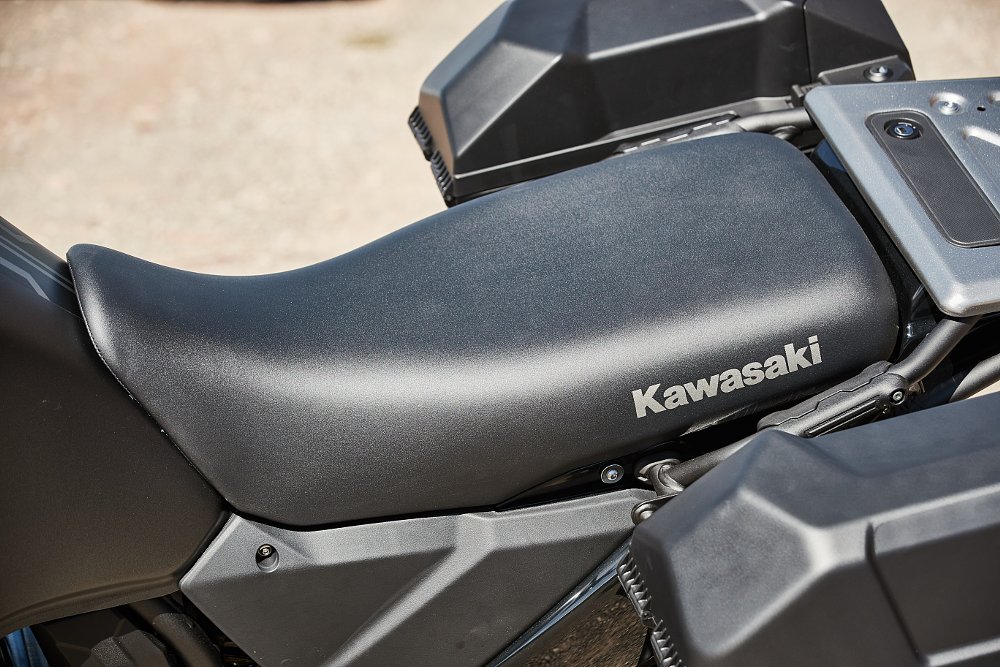
Kawasaki claims a 34.3-inch seat height but it feels a lot lower and more manageable than that. I know I’m a taller rider, but both of my feet can firmly reach the ground with a decent bend in my knee. If needed, however, a low seat is available.
A new generator was added with 26 amps of output, up from 17.5 amps. After powering the LED lights and everything else, an extra 80 watts are available to run accessories like heated gear. Kawasaki mounted accessory USB and cigarette-style charging ports neatly in the dash. A new sealed, maintenance-free battery is lighter and smaller than the predecessor's battery.
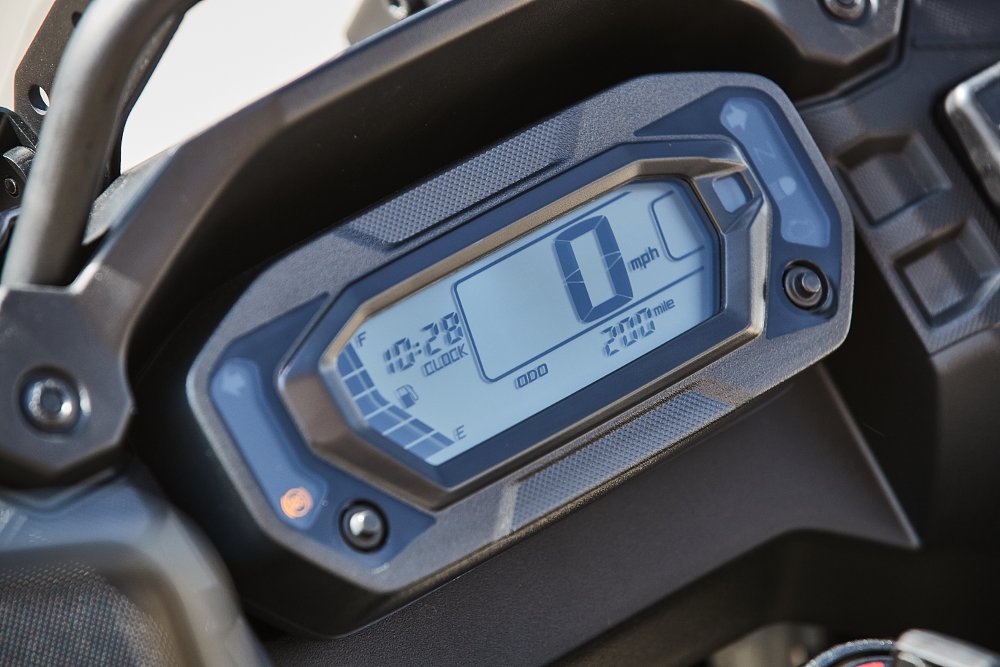
Gone are the analog speedometer and tachometer. In their place is a neat and compact LCD dash that provides the rider with a clear speed indicator, fuel gauge and trip/odometer readout. There is no tachometer on the new model.
The suspension was revised with “improved damping settings” to improve feel. A larger 300 mm brake rotor was fitted to the front wheel (the previous rotor was 280 mm) to improve stopping power and the 240 mm rotor at the rear wheel was thickened by one millimeter to help with heat dissipation.
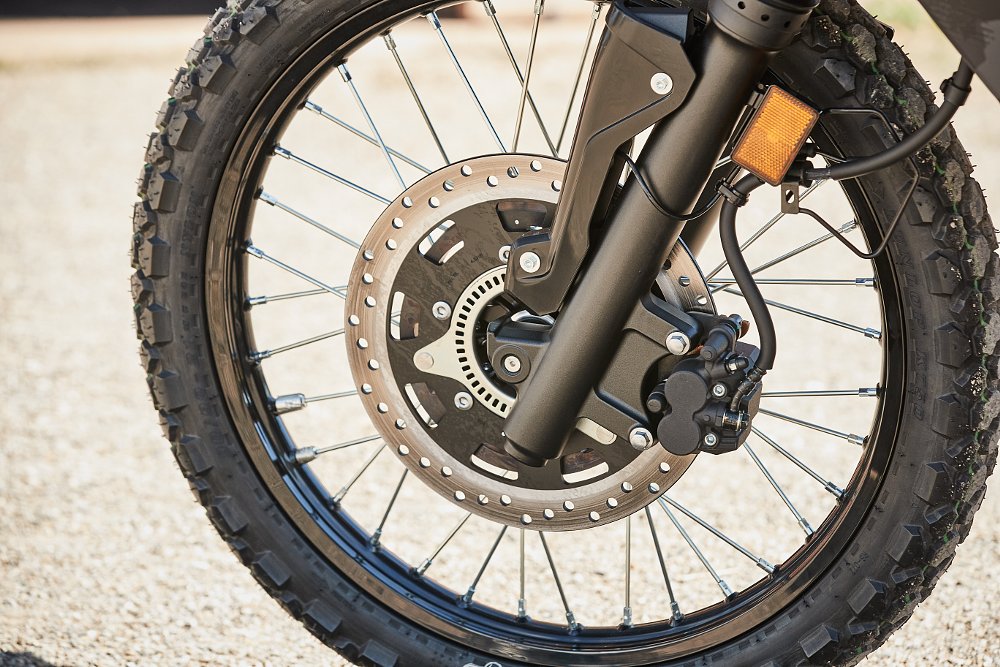
ABS is now an option for the KLR650. It is an off-road-optimized ABS system. While some manufacturers have switchable off-road ABS that allows the rear wheel to lock up completely, Kawasaki’s ABS just reduces the amount of slip in the system at both wheels. There is no way to turn the system off completely.
The KLR650 gets a styling facelift that includes the addition of a new LED headlight. The new looks are a bit more striking and angular than the previous version while maintaining a look that is notably all KLR.
With all of this, the wet weight has increased as well. The 2018 KLR650 tipped the scales at a claimed 432 pounds. The new, non-ABS base model comes in at a claimed 456.2 pounds.
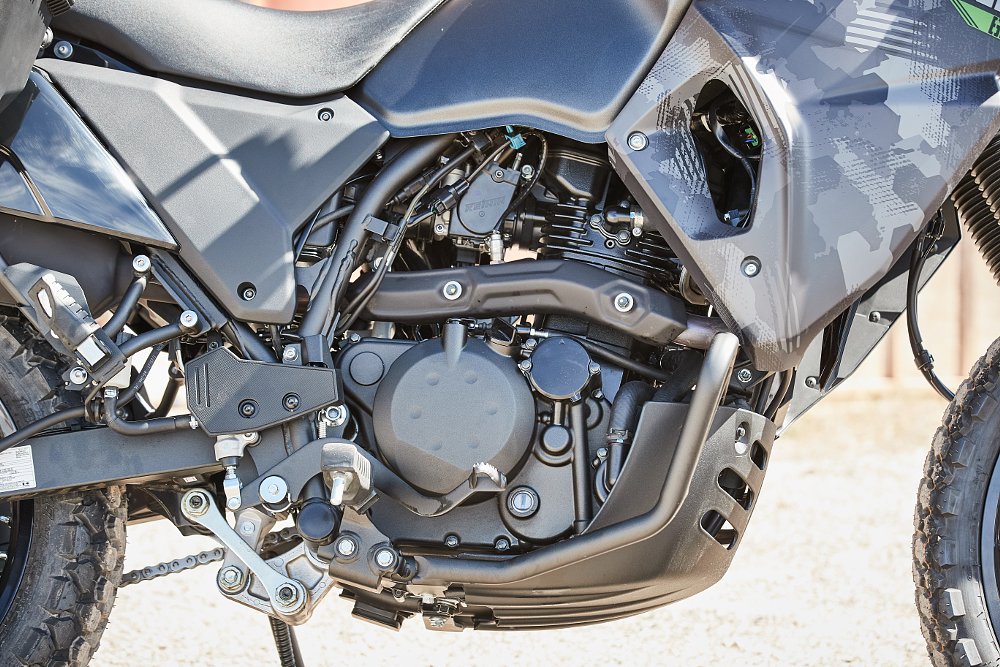
What’s the same
The heartbeat of this motorcycle is unchanged. It’s still the big, venerable 652 cc single-cylinder thumper. While Kawasaki claims 39.1 foot-pounds of torque at 4,500 rpm, they didn’t offer up any horsepower numbers. A quick internet search would have one guessing that this new KLR650 is producing somewhere around 40 horsepower.
Power is still put to the rear wheel through a five-speed gearbox and a chain final drive. Wheel size is unchanged, with a 90/90-21 tire up front and a 130/80-17 at the rear. Dunlop K750s are the stock rubber.
While improvements have been made to the internal damping, the suspension is largely the same. The 41 mm fork offers 200 mm (7.9 inches) of suspension travel and features no adjustability. Kawasaki’s Uni-Trak linkage system and rear shock can still be found out back. With 185 mm (7.3 inches) of suspension travel, the rear shock features adjustability with five clicks of preload and three turns of rebound.
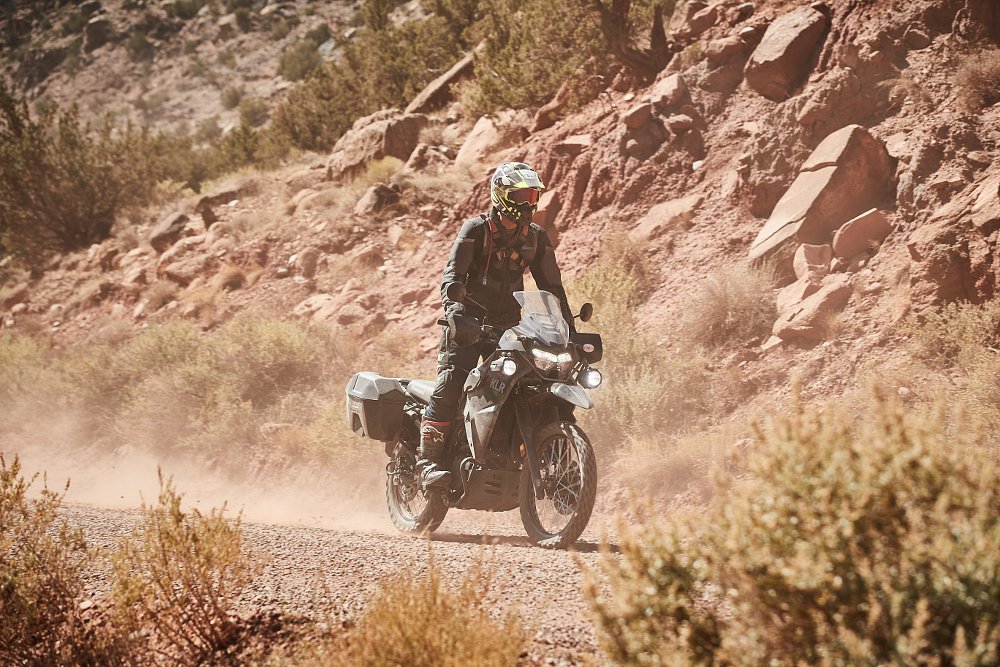
Riding the KLR650
Our two-day ride kicked off at 8 a.m. at the RFD-TV Ranch about 50 miles southeast of Santa Fe, New Mexico. The plan for the first day was to tackle about 175 miles of mostly street riding with a little bit of dirt and end up in Taos for the night. The second day would be a bit longer, roughly 250 miles with about half of the day consisting of dirt roads and two-track and ending in Albuquerque.
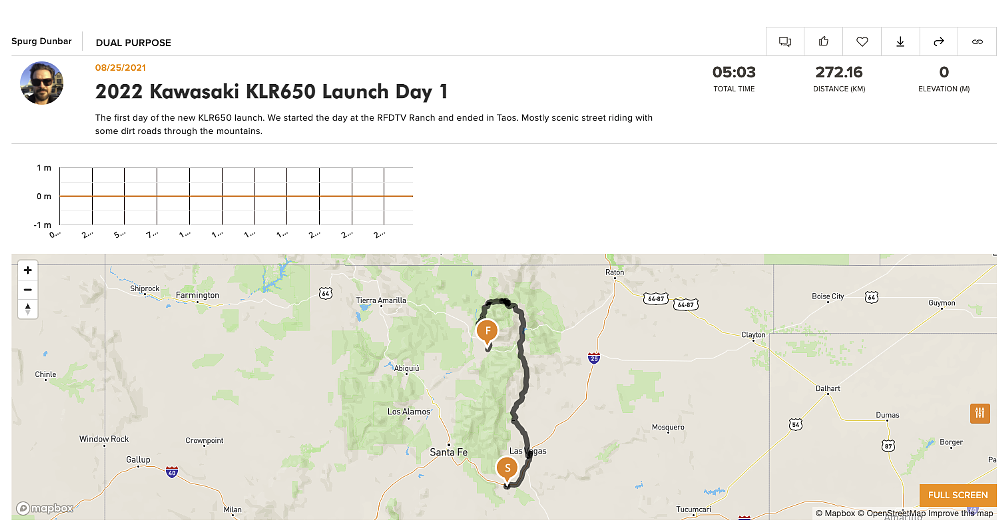
My two days of riding were very different. At the end of the first day, I wasn’t jiving with the bike. So at the start of the second day I made three adjustments that completely changed my outlook.
First I rotated the handlebar forward about 20 degrees. This pulled my body weight over the tank and helped me feel more balanced on the bike off-road and more comfortable on the bike on-road.
Secondly, I adjusted the suspension. During the first day the suspension seemed incredibly soft yet harsh at the same time. The rear end just felt out of harmony with the front of the bike. This didn’t instill much confidence either on winding asphalt or off-road tracks.
I added preload to the rear shock along with a bit of rebound damping (which, on a more budget shock like the KLRs, typically bleeds over into additional compression damping as well). I’m roughly 205 pounds at the moment and one additional click of preload and about three quarters of a turn of rebound damping made a night-and-day difference. The clickers work, people.
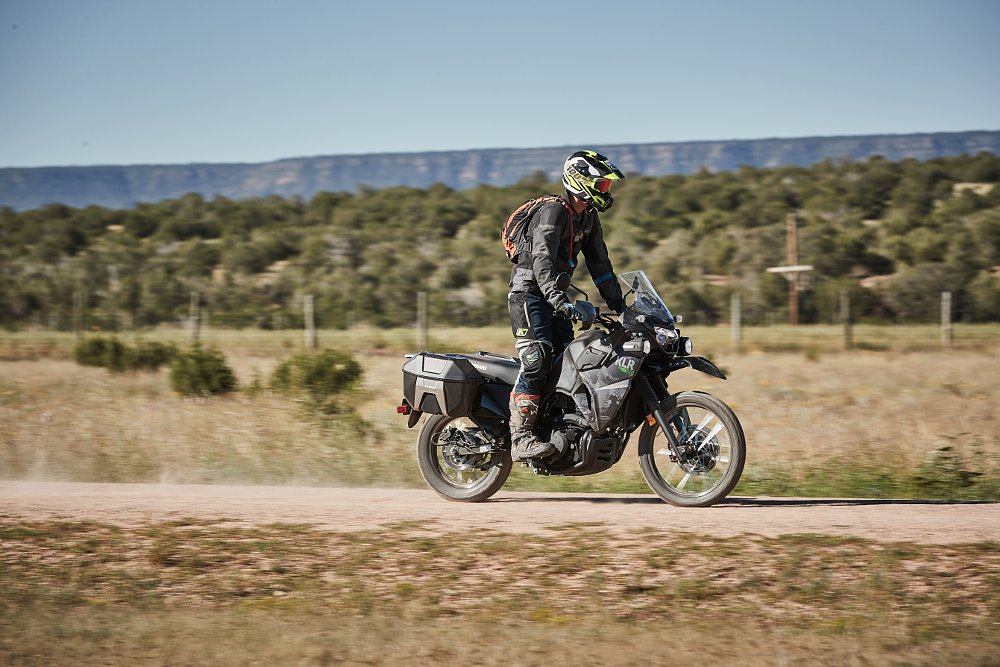
My third change was to my mindset. The KLR650 is not a performance dual-sport motorcycle. It’s a lightweight, touring ADV machine. It will tackle almost any road you wish as long as your wish isn’t to do it too quickly.
Our ride started out with a quick stretch of super slab, laying the hammer down and cruising up to Las Vegas, New Mexico (not Nevada).
The KLR650 felt impressively stable on the highway. Vibrations were still there (it’s a 650 single, after all) but they weren’t nearly as bad as I remember on previous versions. The bike will hold 75 to 80 mph all day and do so with surprising comfort.
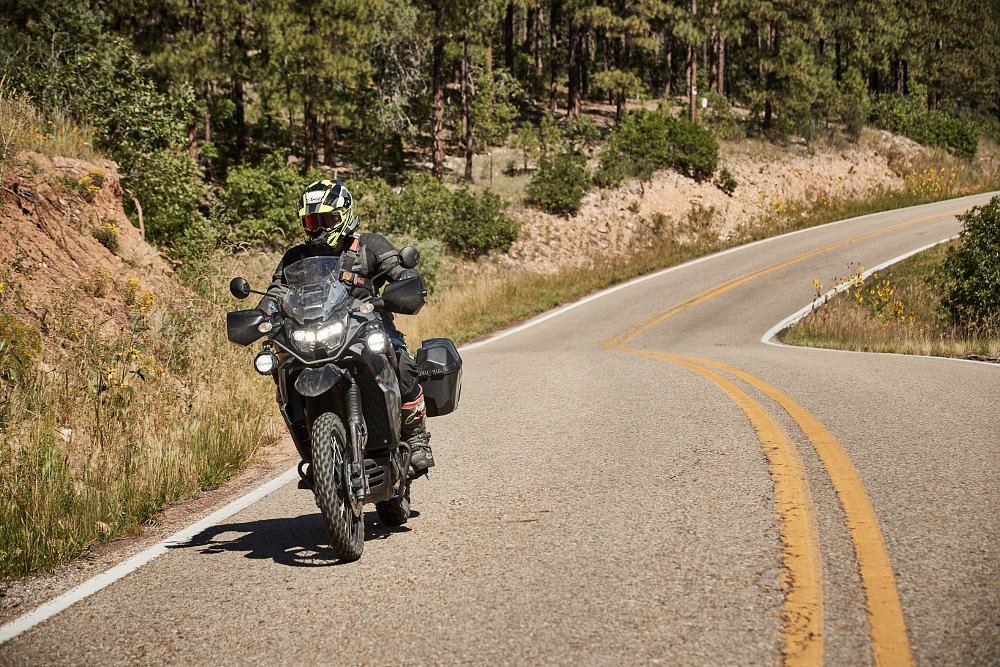
Exiting at Las Vegas, we headed north on winding two-track mountain roads. It was during this stretch that I remember thinking to myself that there was a lot of engine braking going on. That’s when I realized that my foot was resting on the rear brake pedal.
Turns out that it sticks out a quite bit further than most pedals. I actually liked this during the off-road sections. On the road, I just adjusted my foot position.
The advantage of fuel injection was most notable as we rode through elevation changes. I recently did a trip with a friend on an older Suzuki DR650 and even with some specific jetting changes for the trip, her bike still suffered some fueling issues.
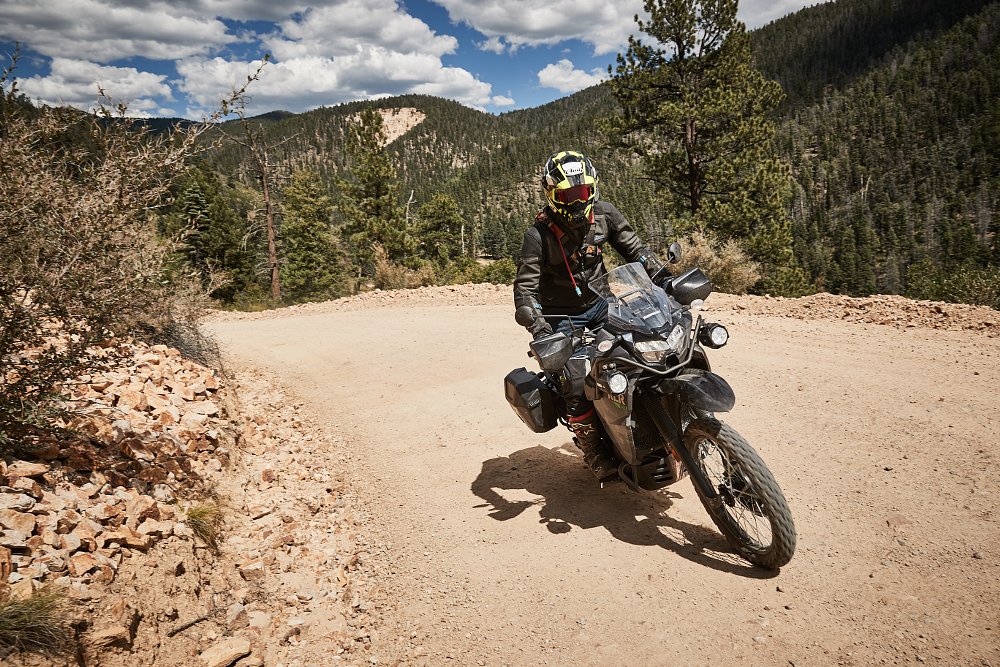
During my extended time with the KLR, I ran it from sea level to roughly 10,000 feet and the fuel injection worked flawlessly. The throttle response was smooth and predictable, even at lower speeds in technical terrain. It did, however, feel noticeably more powerful at lower elevations.
In preparation for the dirt section, a few of us had asked to have our shift levers raised to make it easier to change gears while wearing bulky dirt boots. They raised our shifters one notch on the spline and we all immediately learned that this caused the lever to come into contact with the engine case. The result was not being able to fully shift from first to second gear. Instead it caught in neutral.
We all went back to the lower setting.
This was a relatively big miss on the design of the shift lever. As it stands, it is too low to comfortably shift while wearing full-sized off-road boots. It’s bad while sitting, and worse while standing. It requires the rider to almost completely pivot their foot down to catch the shifter with the inside of their boot.
That being said, after a few miles off-road, I was able to get used to it.
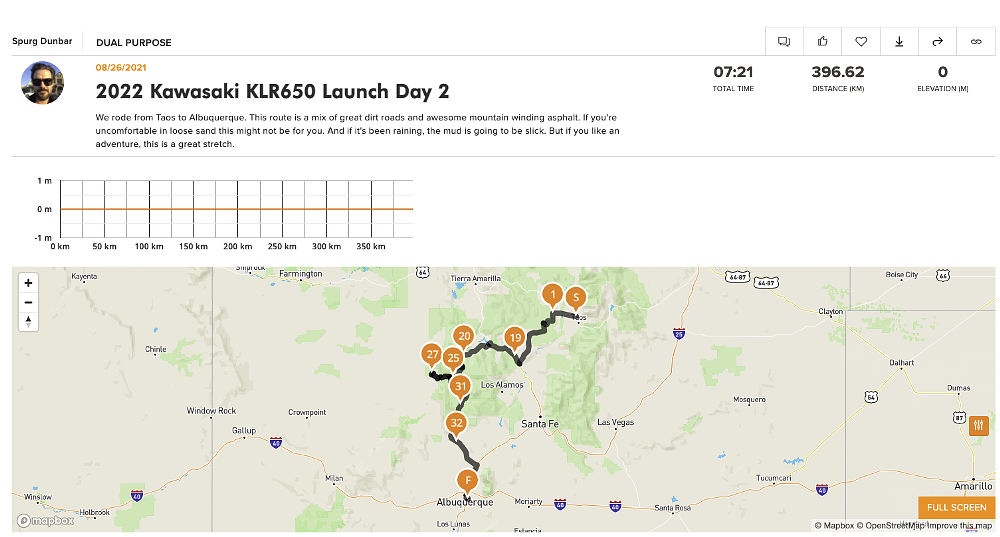
On the second day we started out of Taos and after a quick ride over the Rio Grande Gorge Bridge, we turned off the asphalt for some sandy two-track dirt riding.
We spread out to avoid each other's dust clouds and began testing the limitations of the bike. The KLR650 handled technical terrain well, as long as we watched our pace. I found it was most comfortable around 25-30 mph in the rougher stuff. Even with the improvements to the damping, you can find the limits of the suspension if you push it too hard.
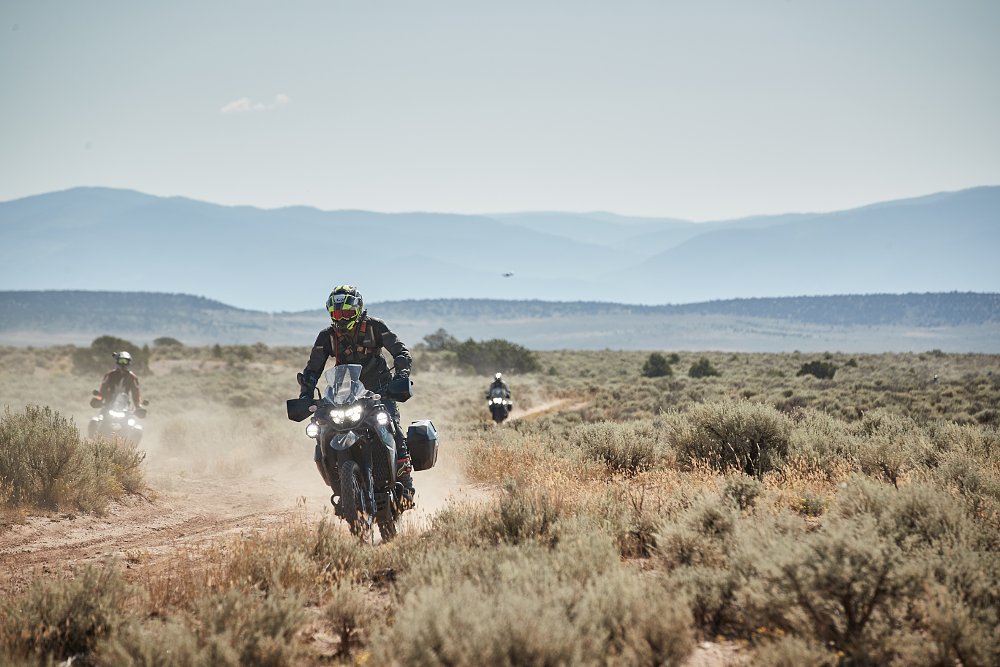
All of the changes to improve the stability and comfort of the bike made it a little slower to turn in. Both on-road and off-, the new KLR650 prefers long sweeping turns as opposed to quick changes in direction.
On the wide open stretches of dirt, the bike felt much more comfortable and planted than its predecessor and I found it possible to get up to speeds of 45 to 50 mph before things started getting squirrely. I think a different set of tires could have helped immensely.
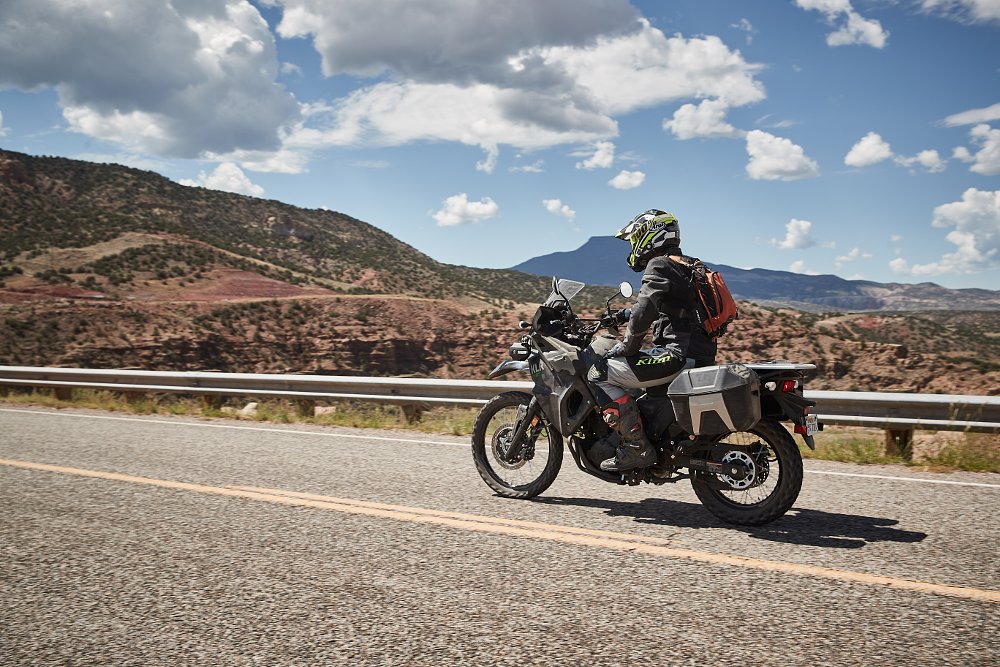
I was riding the KLR Adventure model with ABS. And while initially I wasn’t sure if I was going to like ABS, in the end I would opt for it over the non-ABS version. While I felt that it probably kicked in a bit earlier off-road than I would normally have liked, it was a nice addition to the street sections for heavy braking. While there is no switch to just turn it off in the dirt, you can always pull the fuse. Not ideal, but it’ll do the trick.
Overall, the brake feel is very similar to previous generations. I overheard someone say, “This is the definition of brakes that have a wooden feel.” As it stands, it’s a strong two-finger pull to slow the bike down. I think that a set of aftermarket brake pads would go a long way here.
The brake lever and clutch levers aren’t adjustable. And this is another area where I’d be turning to the aftermarket. The brake lever was a little bit further away from the bar than I would like and the clutch lever was a bit too close. There is an adjustment screw on the brake lever, but that adjusts the lever’s engagement feel.
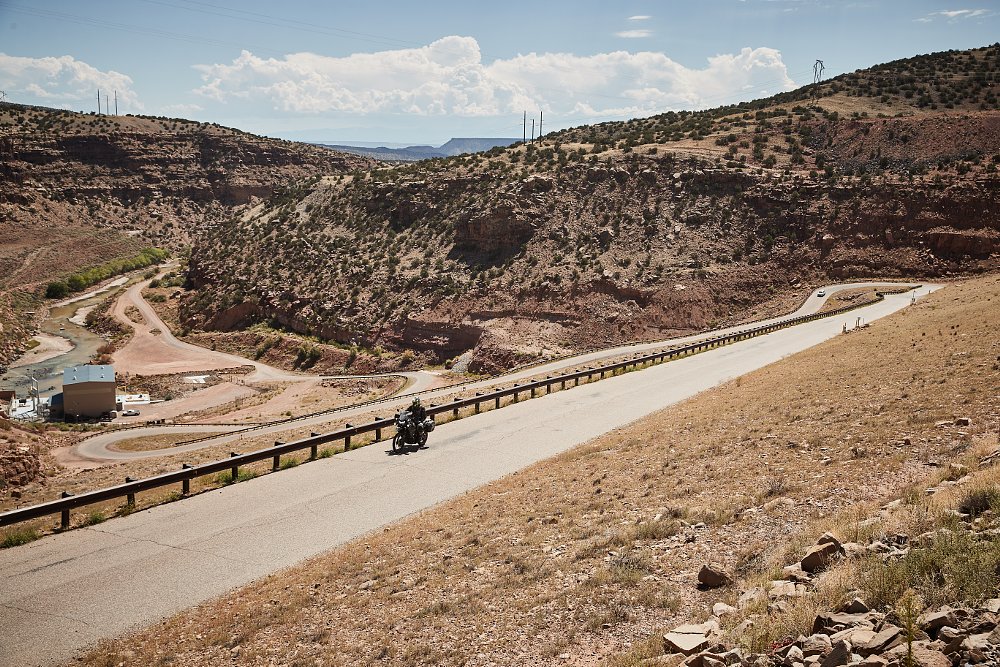
The KLR650’s engine is impressively predictable. It never feels like it’s making enough power to get away from you, yet you can wind it out and get the job done. Just leave plenty of room when attempting a pass.
Overall, the bike feels planted and the rear tire rarely (i.e., never) breaks traction. On top of that, it didn’t stall once. Not once. It holds up its reputation as being a loveable tractor that can get you through nearly anything as long as you take your time and navigate your line correctly.
My biggest disappointment with the bike off-road were the footpegs. Aimed at reducing vibration and improving comfort on the street, the new pegs made it extremely difficult to stand up while riding. While the pegs themselves provided little grip for my boots, the rubber mounts caused them to droop at a bit of an angle. These two things combined to make it feel like my feet were never quite planted and subsequently that made the bike harder to steer.
Back on the asphalt, we hit up the town of Cuba for lunch and some of the sweeping turns of the Valles Caldera National Preserve had me grinning ear to ear. With the tweaks made to the suspension, the bike planted itself in a turn and held the line nicely.
As the launch came to an end, I opted to skip my flight home and ride it an additional two days, racking up a total of nearly 1,700 miles with the KLR650. While there is a second article in there somewhere, and I don’t want to give too much away, I learned some more details about the bike from that trip.
The new headlight is amazing and the accessory lights that come on the Adventure model are a must have. Honestly, this is probably the best stock headlight in recent memory. That being said, the high beam doesn’t really offer any improvement in visibility and the blue high beam indicator is way too bright and distracting. I just rode with the low beam and accessory lights on.
I was disappointed to find that the new LCD dash no longer included a tachometer and that a gear indicator wasn’t added. While I can live without the former, the latter would have made a nice addition.
I did a fuel range test and found that I was able to get 287 miles out of a tank. This equates to roughly 48 miles per gallon. This was achieved with a lot of wide open throttle miles as I wasn’t intentionally trying to eke out good mileage. I was very impressed with this touring range. The only thing to note here is that the fuel indicator began blinking at around 200 miles, giving me roughly another 70 miles or so to go.
Also, just as Kawasaki promised, it used exactly six gallons of fuel.
The new windscreen worked great. At six feet, three inches tall, I had it in the low position and found it kept the wind off my chest and didn’t cause buffeting around my head. The screen itself is not a quick adjustment. So if you do want to move it up, you’ll need a few Allen keys and about five minutes.
All things considered, while I struggled on the first day, I had a blast riding this bike for the remaining three. There are certain bikes that, when the review is over, I’m ready to be done with them. But this little KLR proved to be a fun and entertaining travel companion.
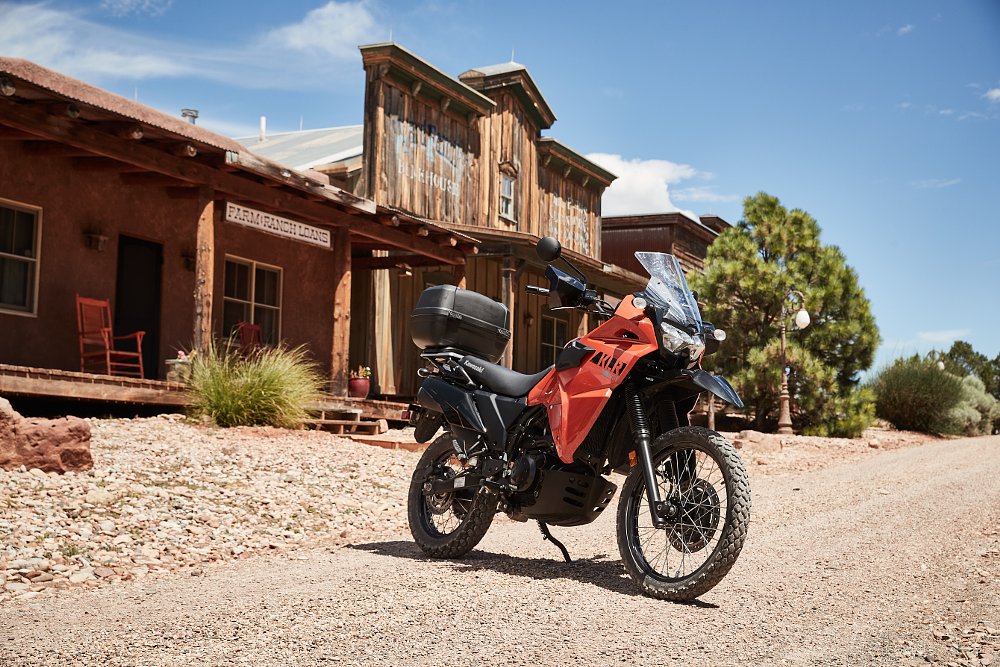
Competition
The KLR 650 is now available in a variety of trim packages starting with the base bike, which features an MSRP of $6,699, and the ABS version for $6,999. The Traveler package adds a top case and electrical outlets (USB and cigarette-style) along with ABS for an MSRP $7,399.
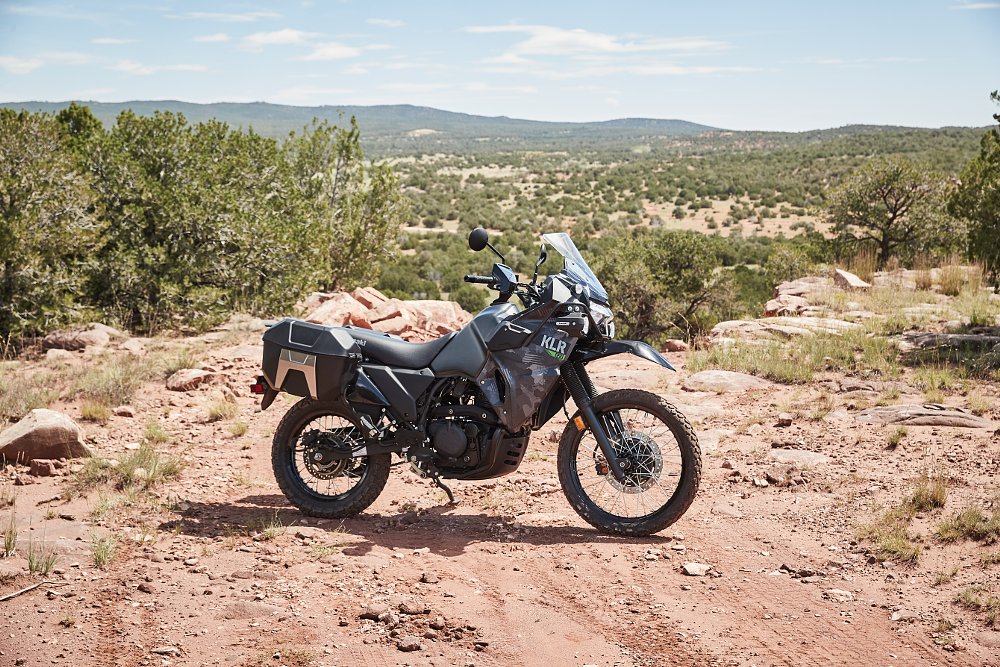
The flagship model, and the one I rode, is the Adventure. It adds 21-liter side cases, "frame sliders" (Kawi's name for crash bars), tank pads, accessory lights and outlets. Without ABS, it’s $7,699 and with ABS it tops out at $7,999.
According to Honda and Suzuki’s websites, the XR650L and DR650S are still available from dealers. But this new KLR650 has really moved away from those bikes as far as its direct competition. It has been refocused on street comfort and touring chops.
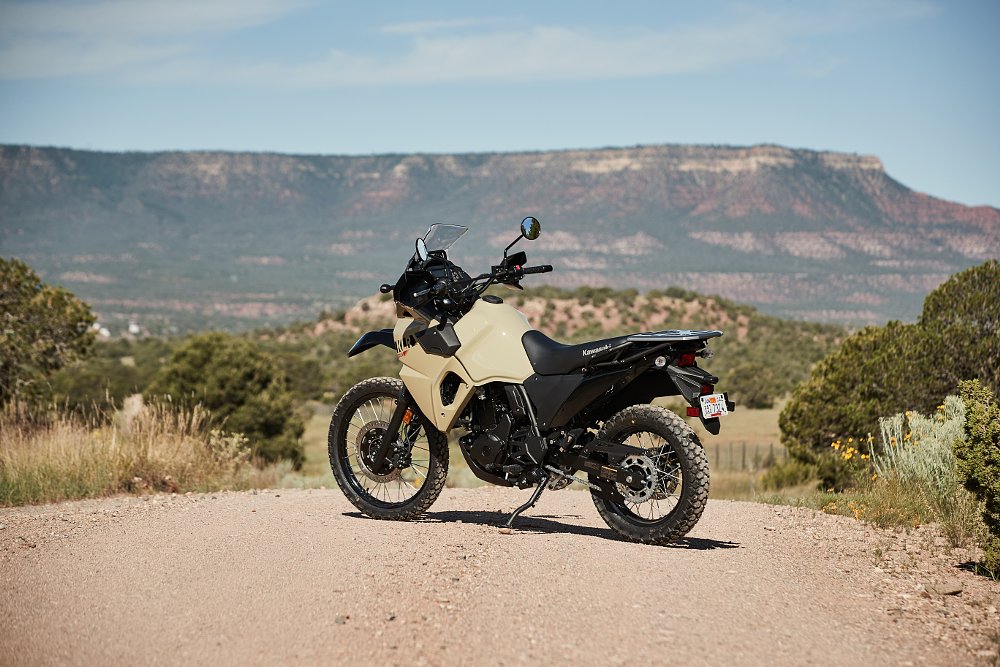
Because of that, a lot of folks are comparing it to a Yamaha Ténéré 700. While the Ténéré has a better engine, suspension, and brakes, it’s also $3,000 more expensive than a KLR650 ABS model. And while they both weigh the same, the KLR feels lighter and more manageable.
While I’m sure there are a lot of folks out there preparing to type lengthy comments about how the Ténéré 700 is better based on a spec sheet, I’ve always said you can’t ride a spec sheet. And this new KLR650 is the perfect example of defying the numbers. No individual part is outstanding, but it somehow adds up to a motorcycle that’s better than the sum of those parts.
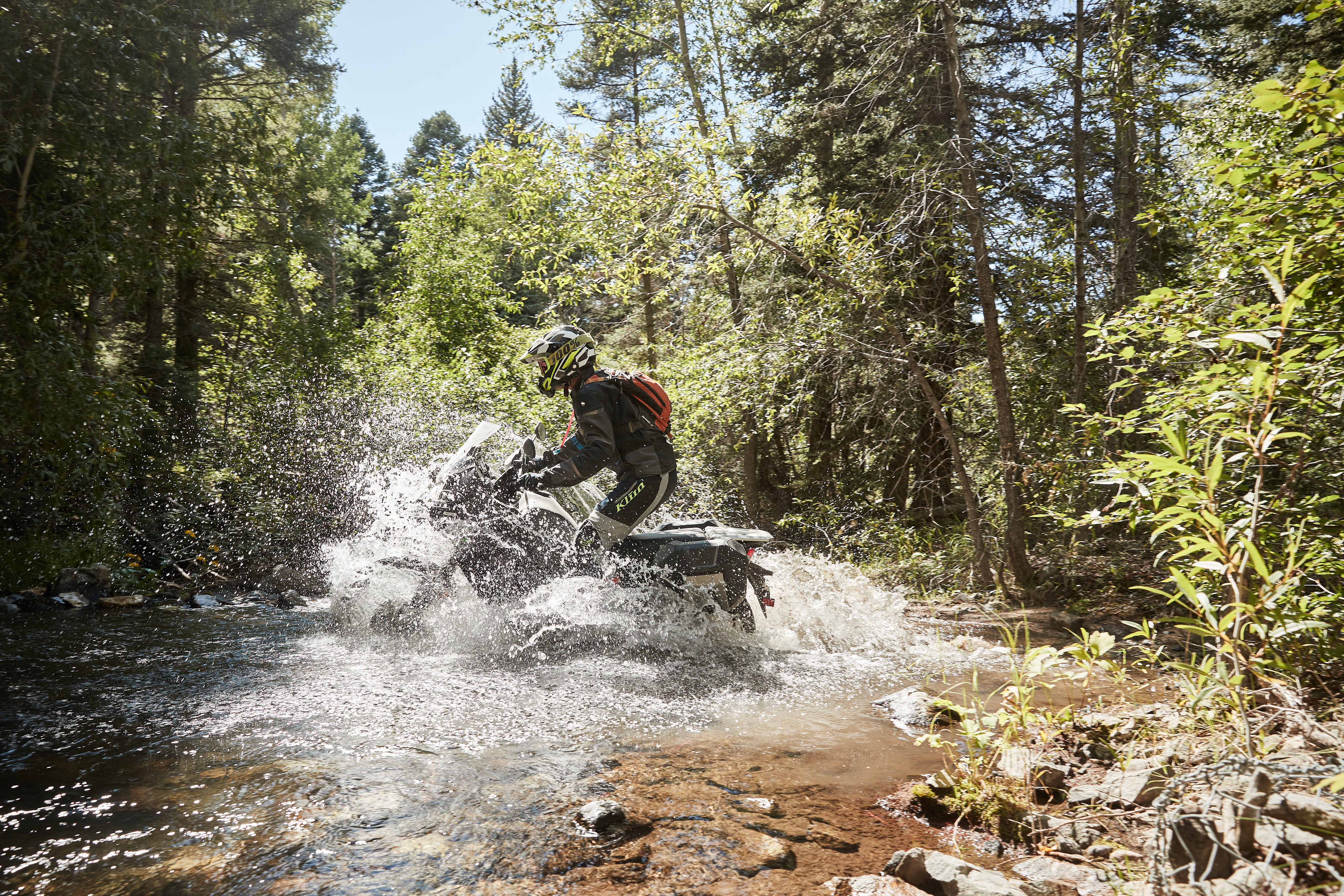
Conclusion
Over four days with the KLR650, I tackled interstate, two-lane highways, back roads and dirt roads. Even with its weaknesses, it was an extremely comfortable and fun touring companion. It’s not a high performance ADV bike that wants to be railed and pushed. Rather, it’s an approachable little dual-sport touring machine that wants to munch up miles, at a reasonable pace, over any type of terrain you put in front of it.
When this bike was announced, I heard a lot of people talking about how they were disappointed it wasn’t given a bigger, multi-cylinder engine and made into a “proper” adventure bike. While I’d like to see something like that from Kawasaki in the future, frankly, I’m glad they didn’t go that route with the redesigned KLR650.
At no point during my extended tour with this bike did I find myself wishing I was on something bigger or more powerful. The ethos of this motorcycle was never meant to be high-end performance. It’s designed to get you there, with tractor-like grunt and determination. Understanding that forced me to slow down and enjoy the simpler aspects of riding a motorcycle and enjoying the scenery.
This iteration is definitely more focused on touring stability and all-day comfort. It’s an affordable touring machine for nearly any road you decide to travel. It’s easy to ride in the city and around town. It’s docile enough for beginner riders and versatile enough for even the most experienced.
Even though it might not win in any given category, as a whole, it adds up to a very impressive motorcycle. And with that, it carries on the KLR650 tradition.
|
2022 Kawasaki KLR650
|
|
|---|---|
|
Price (MSRP)
|
$6,699 base, $6,999 ABS, $7,399 Traveler, $7,699 Adventure, $7,999 Adventure w/ABS
|
|
Engine
|
652 cc, liquid-cooled, DOHC, four-valve, single cylinder
|
|
Transmission,
final drive
|
Five-speed, chain
|
|
Frame
|
Semi-double steel cradle frame
|
|
Front suspension
|
41 mm fork; 7.87 inches of travel
|
|
Rear suspension
|
Uni-Trak monoshock, five-step preload adjustment, stepless rebound; 7.28 inches of travel
|
|
Front brake
|
Single two-piston caliper, 300 mm disc, optional ABS
|
|
Rear brake
|
Single-piston caliper, 240 mm disc, optional ABS
|
|
Rake, trail
|
30.0 degrees, 4.8 inches
|
|
Wheelbase
|
60.6 inches
|
|
Seat height
|
34.3 inches
|
|
Fuel capacity
|
6.1 gallons
|
|
Tires
|
90/90-21 front, 130/80-17 rear
|
|
Claimed weight
|
456.2 (non-ABS), 460.6 (ABS), 471.7 (Traveler), 487.1 (Adventure) pounds |
|
Available
|
Now |
|
Warranty
|
12 months
|
|
More info
|
|

 Membership
Membership


